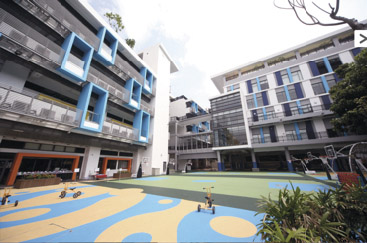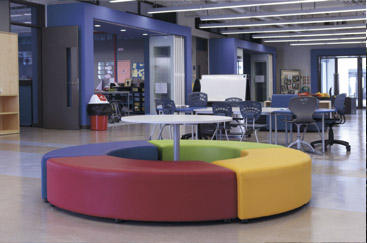By Steve Francis
Whilst this question is challenging and confronting, it is vital that educators consider the issue of the relevance of schooling today and whether it is meeting the needs of students.
According to iconic author Seth Godin, “Compulsory schooling was designed for the industrial age. Large-scale education was not developed to motivate kids or to create scholars. It was invented to churn out adults who worked well within the system. Scale was more important than quality, just as it was for most industrialists.”
Schools have been around in their current format for well over 100 years. According to Godin, our grandfathers and great-grandfathers built schools to train people to have a lifetime of productive labour as part of the industrialised economy. And it worked. There have been several generations of productive, fully employed workers. But are schools serving the purposes of today’s students?
Whilst many school leaders and perhaps even more school staff will complain of change fatigue, many other industries have experienced transformations far more radical than have been witnessed in education. Schools today, with a few additional technological tweaks, broadly resemble the classrooms of a century ago – one expert adult out the front of a group, endeavouring to transfer skills and knowledge to an homogenous group of waiting recipients. The size of the group, their readiness and eagerness may have fluctuated, but the basic structure remains.
Radical transformations have occurred in industries including banking, retail, publishing, accommodation and transportation. Think eBay, Amazon, Airbnb, Uber and the ATM – when was the last time readers queued to talk to a teller at the branch of their bank?
Given the changes in those other industries and developments in technology, why have schools not changed more? There are a number of reasons.
Education is important. What educators do in schools has a long-term impact on broader society. Put simply, educators cannot afford to experiment with young lives and they are therefore risk averse. The current schooling system is good. Despite headlines in the popular press, most schools are achieving good results and making a positive contribution to their communities. However, good is the enemy of great. Achieving good results leads to complacency and undermines the need for radical change.
Change fatigue is also a contributing factor. Schools constantly feel like they are changing and this presents as stress and anxiety. As a result, school leaders tread carefully and conservatively in planning change processes and opt for incremental change rather than transformational change.
A further factor contributing to a conservative approach is that everyone is an expert, because everyone has been to school. Parents and the broader community judge schools and their effectiveness based on their recollections of their own school experience. This myopic approach contributes to schools preparing students for their parents’ pasts, rather than their own futures. Significant change often takes a giant leap that cannot be achieved through incremental steps.
The final factor is that one of the purposes of schooling, in its current structure, is to mind children during the day whilst their parents are working.
In considering whether schools are in fact like dinosaurs, at risk of becoming extinct, I reflect back on my experience as principal of Kowloon Junior School in Hong Kong. I was fortunate to lead a collaborative process of designing a new campus to be built for the school’s 900 primary students. Each year level had five classes of 30 students. We had made the transition from teaching the UK National Curriculum to implement the International Baccalaureate’s (IB) Primary Years Program (PYP).
The process included the development of an extensive wish list of facilities to maximise the educational outcomes for 21st century learners. The dream list included drama and dance studios, music practice rooms, small-group breakout spaces, rooftop playgrounds covered in artificial grass, a vast array of technology, and amazing performance and environmental spaces. Each floor on the multi-level structure was designed to accommodate the cohort from one year level. Spaces were planned for launching the units of enquiry, frontloading information to the students and facilitating breakout groups as they embarked on their enquiry. The possibilities were endless and exciting!

Attending the opening ceremony for the new campus, I was amazed to see the wish list had been turned into reality. Previous experience with architects and blank sheet wish lists had led me to consider our plans to be aspirational and that the reality of budgets would result in many items being deleted. The finished facility is world class, with all of the items on our wish list delivered, way beyond our expectations. Yet I would argue that the building is a dinosaur.

Whilst the building, resources, facilities and furniture are simply amazing, the basic structure is set up along traditional lines – five experts with other supporting adults facilitating the learning of a cohort of 150 homogenous students. The facility is great, but it is a high-end, high-tech version of the model designed for the industrial age. As John Dewey notes, “If we teach today’s students as we taught yesterday’s, we roll them off tomorrow.” Technology presents amazing potential, but must be more than a high-tech chalk and talk; students need to be active learners with technology.

Just providing students with access to technology in the classroom is not enough. Schools must ensure that students are skilled in using technology in active ways. It is vital that all students understand how to use technology as a tool to engage in creative, productive, lifelong learning rather than simply consuming passive content. In other words, students should be making things and connecting with others and exploring the world, rather than staring at screens.
John Holt highlights the point as follows, “We can best help children learn, not by deciding what we think they should learn and thinking of ingenious ways to teach it to them, but by making the world accessible to them, paying serious attention to what they do and their questions, and helping them explore the things they are most interested in.”
Educators must finally put to bed the traditional concept that the teacher is holding the metaphorical jug filled with skills and knowledge ready to fill the empty vessels held by the students. They must move away from the traditional teacher-centred classrooms and utilise technology to change the role of teachers in the classroom. It is necessary to move from teachers being mere providers, to finally becoming the facilitators in the process of learning that educators have long espoused. The learning must become irresistibly engaging to capture the interests of students in the digital age.
Malcolm Gladwell, in his award-winning book, describes the tipping point as the name given to that one dramatic event moment in an epidemic when everything can change all at once. For many reasons, the tipping point in education is fast approaching:
- technology provides abundant, free and easy access to information
- multimedia-drenched students have shortened attention spans and are more difficult to engage
- families are time poor and many are under financial pressure
- schools are preparing students for roles that have not been invented yet
- proliferation of online learning provides access to free education
- many schools are exploring flipped classrooms
- many homes and classrooms have abundant access to technology
- many educators are acutely aware of the need to change and are frustrated
What the tipping point will be remains uncertain; however, it is certain that schools as they are known today ARE dinosaurs and are at risk of becoming extinct.
School leaders need to be brave and take some leaps or they run the risk of becoming obsolete, if not extinct.
For a full list of references, email info@interactivemediasolutions.com.au
Steve Francis has been principal of a number of schools, from a one-teacher school through to a large metropolitan school in Brisbane and an international school in Hong Kong. He is the author of four books and has completed a Masters in School Leadership. His research on teacher stress led him to develop the Happy School program. Over 650 schools subscribe to receive Steve’s weekly Happy School articles and use them to boost staff morale and reduce teacher stress. He also developed the Survey My School and Survey My Class instruments to help school leaders drive school improvement.


Latest posts by etsmagazine (see all)
- Introducing the MOBIUZ Ultrawide Curved Gaming Monitor – The Next Evolution in E-Gaming - January 28, 2022
- Technology For Inclusion With Diverse Learners - December 3, 2019
- 2020 Vision for Interactive Learning in Tomorrow’s Classroom - April 29, 2019
You must be logged in to post a comment.


There are no comments
Add yours